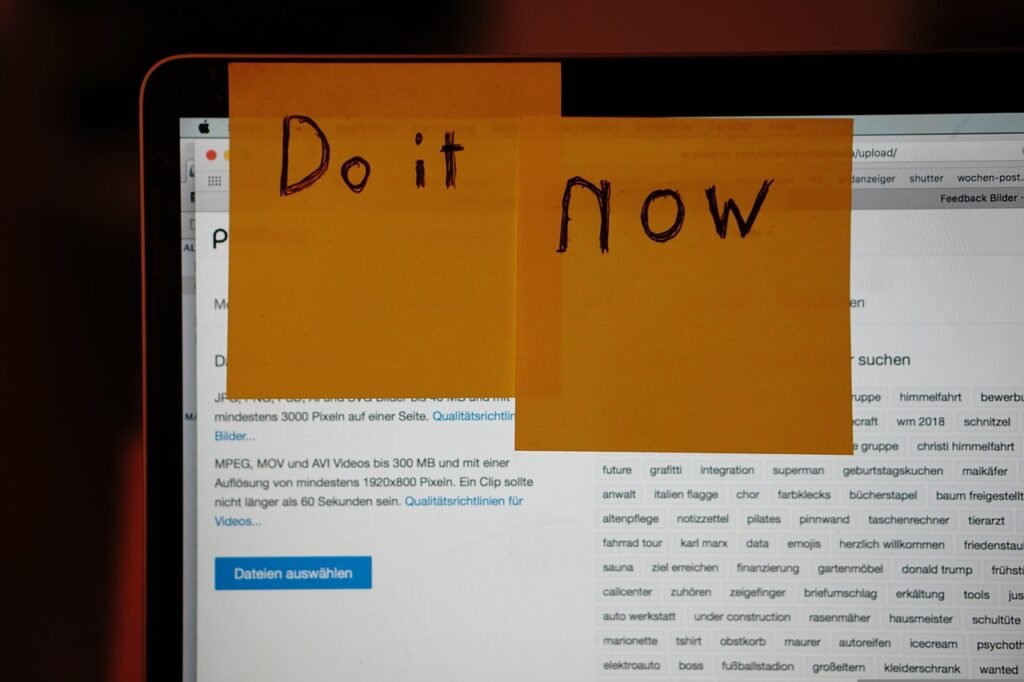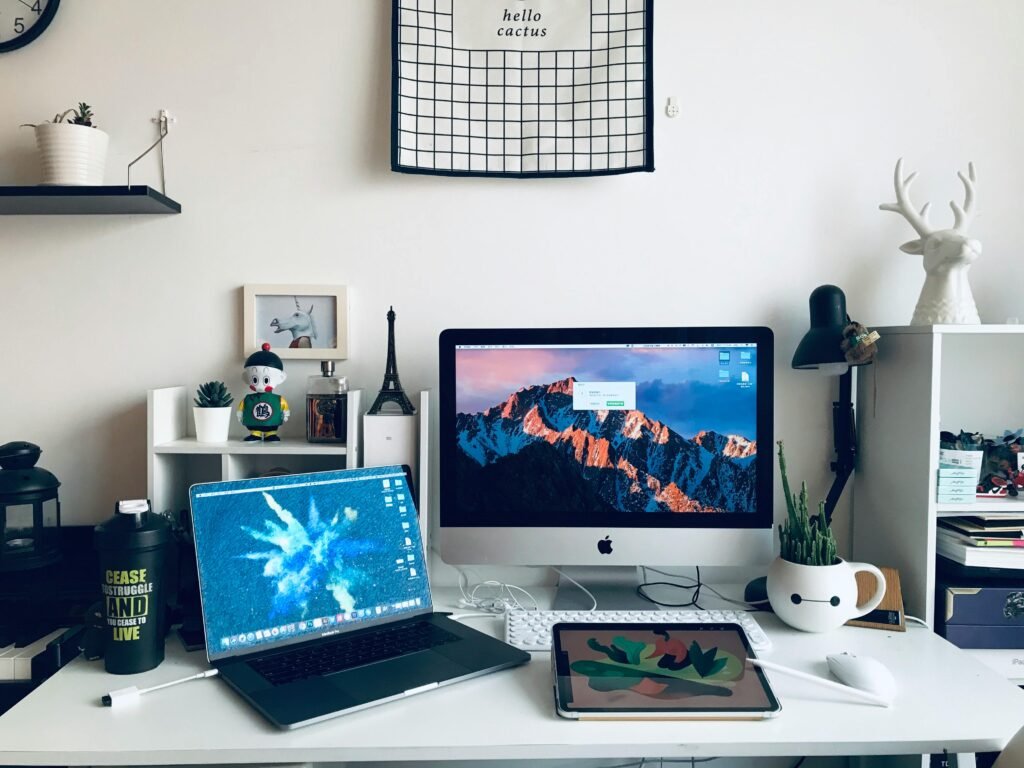
Introduction to Remote Work Productivity
Remote work has shifted from being a temporary arrangement to a long-term solution for many professionals.
While the benefits of working from home are numerous, including flexibility and reduced commute times, it also requires a strong focus on productivity to ensure success.
In a remote work setting, effective time management becomes more critical as the lines between personal and professional life often blur.
Productivity in a remote environment is not just about working harder but working smarter.
It’s about adopting strategies that help you manage your time efficiently, enabling you to achieve your goals without sacrificing your well-being.
This requires a structured approach to your daily tasks and a commitment to maintaining a balance between work and personal life.
One of the first steps to enhance productivity is to establish a routine that mimics the structure of a traditional office setting.
This includes setting specific work hours, taking scheduled breaks, and having a clear start and end to your workday.
This structure can help create a sense of normalcy and keep you focused throughout the day.
Another important aspect is creating a conducive work environment.
This means setting up a dedicated workspace that is free from distractions and equipped with everything you need to perform your tasks efficiently.
An ergonomic chair, proper lighting, and a clutter-free desk can significantly impact your ability to concentrate and work effectively.
Leveraging technology is also essential for boosting productivity in a remote setting.
Tools like project management apps, digital calendars, and communication platforms can streamline your workflow and help you stay organized.
However, it’s crucial to use these tools mindfully to avoid digital overload.
Communication plays a pivotal role in remote work productivity.
Staying connected with your team through regular check-ins and updates can ensure that everyone is on the same page and working towards common goals.
It also helps in mitigating feelings of isolation, which can negatively impact your motivation and productivity.
Incorporating these strategies into your remote work routine can help you manage your time more effectively, enabling you to achieve higher levels of productivity while maintaining a healthy work-life balance.
Prioritizing Tasks

Effectively prioritizing tasks is a cornerstone of time management and productivity.
One practical tool that can transform the way you handle your to-do list is the Eisenhower Box, also known as the Urgent-Important Matrix.
This technique involves dividing tasks into four categories: urgent and important, important but not urgent, urgent but not important, and neither urgent nor important.
By doing so, you can focus on high-priority tasks that require immediate attention, while deferring or delegating less critical ones.
This structured approach allows you to concentrate on activities that drive the most value, rather than getting bogged down by less important tasks.
Another powerful strategy is to set daily goals.
By clearly defining what you need to accomplish each day, you provide yourself with a roadmap that guides your actions and keeps you on track.
This practice not only sharpens your focus but also gives you a sense of achievement as you tick off completed tasks.
Whether it’s a major project milestone or smaller, incremental steps, having clear daily objectives can enhance your overall productivity.
For a more detailed approach, consider incorporating the ABCDE method.
This technique involves categorizing tasks by priority: A for very important tasks that must be done today, B for important tasks that should be done, C for tasks that would be nice to do, D for tasks that can be delegated, and E for tasks that can be eliminated.
By systematically addressing each category, you ensure that your most critical tasks receive the attention they deserve, thereby optimizing your time management.
Lastly, don’t underestimate the power of a well-organized to-do list.
Digital tools like task management apps can help you keep track of your priorities in an efficient manner.
These apps often come with features like deadlines, reminders, and progress tracking, making it easier to manage your tasks and deadlines effectively.
By implementing these prioritization strategies, you can streamline your workflow and ensure that your efforts are aligned with your most important goals.
Time Blocking Technique

Time blocking is a method where you divide your day into segments dedicated to specific tasks or types of work.
By pre-allocating time slots for particular activities, you can concentrate on one thing at a time, reducing the likelihood of distractions and multitasking, which can often diminish productivity.
This structured approach helps ensure that each task receives the focus it deserves, fostering a disciplined and effective work routine.
Start by assessing your tasks and categorizing them based on their nature and urgency.
Allocate time blocks for deep work, meetings, administrative tasks, and even breaks.
For example, you might reserve your mornings for high-concentration tasks when your energy levels are at their peak, and schedule meetings or routine tasks for the afternoons.
This thoughtful planning enables you to match your energy levels with the right type of work, maximizing your efficiency.
An important aspect of time blocking is to remain flexible.
While the goal is to stick to your schedule as closely as possible, allow for adjustments when unforeseen tasks or emergencies arise.
It’s helpful to include buffer times between blocks to accommodate any overruns or unexpected interruptions, ensuring that your schedule remains realistic and manageable.
Using digital tools like Google Calendar or Microsoft Outlook can simplify the time blocking process.
These tools offer features such as reminders and notifications, helping you stay on track with your planned activities.
Additionally, visualizing your day through a digital calendar can give you a clearer perspective on how you are spending your time, allowing for easier adjustments and refinements.
Remember, the effectiveness of time blocking also depends on minimizing interruptions during your designated time slots.
Communicate your schedule to colleagues and household members to set expectations about your availability.
Utilize features like “Do Not Disturb” modes on your devices to further minimize disruptions.
Implementing time blocking can transform the way you manage your day, leading to greater productivity and a more balanced work-life dynamic.
Utilizing Technology for Productivity

In the digital age, technology can be a powerful ally in your quest for productivity.
Leveraging apps like Trello and Asana for task management can streamline your workflow and keep you organized.
Additionally, integrating digital calendars for scheduling helps in managing appointments and deadlines efficiently.
However, it’s important to use technology wisely; a recent study found that workers spend an average of 45 minutes a day searching for information across different tech platforms, with inefficient use of digital channels posing a threat to productivity.
Choosing the right tools is crucial.
For communication, platforms like Slack or Microsoft Teams can centralize your messages, reducing the time spent switching between different applications.
Video conferencing tools such as Zoom or Google Meet are indispensable for maintaining face-to-face interaction, which is essential for team cohesion and effective communication.
Automation is another facet of technology that can save valuable time.
Tools like Zapier or IFTTT can automate repetitive tasks, such as data entry or social media posting, freeing up your schedule for more critical activities.
For instance, setting up an automation to move email attachments directly into cloud storage can streamline your document management process.
Document collaboration tools like Google Drive or Microsoft OneDrive allow multiple team members to work on the same document simultaneously, making it easier to share ideas and complete tasks faster.
These platforms also offer version control, ensuring that everyone is working on the most up-to-date information.
Incorporating productivity extensions for your browser can also make a significant difference.
Extensions like StayFocusd can limit your time on distracting websites, while tools like Grammarly can enhance your writing efficiency by catching errors in real-time.
Lastly, it’s important to set boundaries with technology to avoid burnout.
Utilizing “Do Not Disturb” modes during focused work periods and scheduling specific times to check emails and messages can help maintain a healthy balance between connectivity and concentration.
Implementing Breaks

Regular breaks are an essential component of an effective workday, especially in a remote setting.
Taking short, consistent breaks can prevent burnout and enhance your ability to focus when you return to your tasks.
One effective technique for incorporating breaks is the Pomodoro Technique, where you work for a set period, typically 25 minutes, followed by a short 5-minute break.
After completing four cycles, take a longer break of 15-30 minutes.
This method can help you maintain high levels of concentration while providing your brain with necessary intervals of rest.
In addition to structured techniques, it’s crucial to listen to your body.
Sometimes, you might need a break sooner than planned, and that’s okay.
The key is to recognize signs of fatigue or decreased focus and step away from your workspace to recharge.
Activities such as stretching, a short walk, or even a quick mindfulness exercise can refresh your mind and body, preparing you for the next work session.
It’s also beneficial to incorporate movement into your breaks.
Sitting for prolonged periods can lead to physical discomfort and reduced productivity.
Simple exercises like stretching, yoga, or even a brisk walk around your home can alleviate tension and promote better circulation.
Not only does physical activity improve your physical well-being, but it also enhances mental clarity and mood.
For those who find it challenging to step away from their desks, setting reminders can be helpful.
Use apps or digital timers to prompt you to take regular breaks.
This ensures you don’t skip these essential pauses in your workday, even when you’re engrossed in a task.
Hydration and nutrition also play a vital role in maintaining energy levels.
Use your breaks to drink water and have a healthy snack.
Proper hydration and nourishment can significantly impact your cognitive function and overall productivity.
Incorporating these strategies into your routine can transform your approach to breaks, ensuring they become an integral part of your workday that boosts both your productivity and well-being.
Creating a Dedicated Workspace

A dedicated workspace can dramatically enhance your productivity by providing a structured environment tailored to your work needs.
First and foremost, select a quiet area in your home that you can designate exclusively for work.
This doesn’t have to be an entire room; even a well-organized corner can suffice.
The key is to create a space that signals to your brain that it’s time to focus and get things done.
Ergonomics play a crucial role in maintaining comfort and efficiency.
Invest in an ergonomic chair that supports good posture, and position your desk at the right height to reduce strain on your wrists and back.
Proper lighting is also essential; natural light is ideal, but if that’s not available, opt for a good quality desk lamp that minimizes eye strain.
Keep your workspace clutter-free.
A tidy desk can significantly boost your ability to concentrate.
Use organizers, shelves, or storage boxes to keep essential items within reach but out of your immediate workspace.
This reduces distractions and allows you to focus better on your tasks.
Incorporate elements that inspire you.
Whether it’s a piece of artwork, a plant, or a vision board, having something visually stimulating can enhance your creativity and motivation.
However, be cautious not to overdecorate as this can lead to unnecessary distractions.
Technology setup is equally important.
Ensure that your computer, monitor, and other devices are arranged to minimize physical strain and maximize efficiency.
High-speed internet is a must, so invest in a reliable connection to avoid disruptions during important tasks or meetings.
Noise-canceling headphones can be a valuable addition to your workspace, especially if you share your home with others.
These can help block out background noise, allowing you to concentrate better on your work.
Finally, personalizing your workspace to suit your specific needs and preferences can make a huge difference.
Tailor the setup to align with your work habits and productivity patterns, and you’ll find it easier to stay engaged and effective throughout the day.
Setting Boundaries with Household Members

Maintaining productivity in a remote work environment often involves navigating the complexities of sharing space with family or roommates.
Start by having an open conversation about your work hours and the importance of minimizing interruptions.
Clearly defining your work schedule helps set expectations and fosters an atmosphere of mutual respect.
Designate a specific area in your home for work to physically signal that you are in professional mode.
This can be a separate room or even a well-defined corner of a shared space.
Using visual cues, such as a closed door or a “do not disturb” sign, can serve as gentle reminders to others that you are busy.
It’s also helpful to establish a communication protocol for emergencies.
Make sure household members know the difference between urgent matters that require immediate attention and issues that can wait until a scheduled break or the end of your workday.
This ensures that you can stay focused without missing important family matters.
Setting boundaries isn’t just about preventing disruptions; it’s also about respecting your own work-life balance.
Make it clear when your workday ends and stick to it.
This can help in reducing the temptation to extend work hours into personal time, maintaining a healthier balance between professional and home life.
Another effective strategy is to involve household members in your scheduling.
Share your calendar or daily agenda with them so they are aware of your busiest times.
This can help in planning household activities around your work schedule, minimizing potential conflicts.
Finally, don’t forget to show appreciation for their cooperation.
Acknowledging their efforts to respect your work time can go a long way in maintaining a supportive home environment, making it easier for you to stay productive and focused.
Continuous Evaluation and Adjustment

Continuous evaluation is key to maintaining and enhancing your productivity over time.
By periodically assessing your current strategies, you can identify what’s working well and what may need refinement.
This iterative process allows you to stay agile and responsive to changes, whether they stem from shifts in your workload, personal circumstances, or broader industry trends.
Start by setting aside time at the end of each week or month to review your progress.
Look at what you’ve accomplished, where you faced challenges, and how effectively you managed your time.
Tools like productivity journals or tracking apps can help you gather data to make informed decisions.
Feedback is another valuable component of continuous improvement.
Don’t hesitate to seek input from colleagues, supervisors, or even family members who share your workspace.
Their perspectives can offer insights you might overlook, helping you fine-tune your approach for better results.
Experimentation plays a significant role in this process.
Feel free to try new methods or tools to see if they enhance your productivity.
For instance, if you notice that your energy dips in the afternoon, you might experiment with adjusting your schedule or incorporating a brief exercise session to boost alertness.
Adaptability is also crucial. Be willing to pivot when a particular strategy isn’t delivering the desired outcomes.
Flexibility ensures that you can seamlessly integrate new techniques into your routine without causing disruption.
Remember, the goal is to create a dynamic system that evolves with you.
As you refine your time management strategies, you’ll find that your ability to meet professional demands while maintaining personal well-being improves significantly.
This continuous cycle of evaluation and adjustment will empower you to stay productive, motivated, and balanced in your remote work environment.
